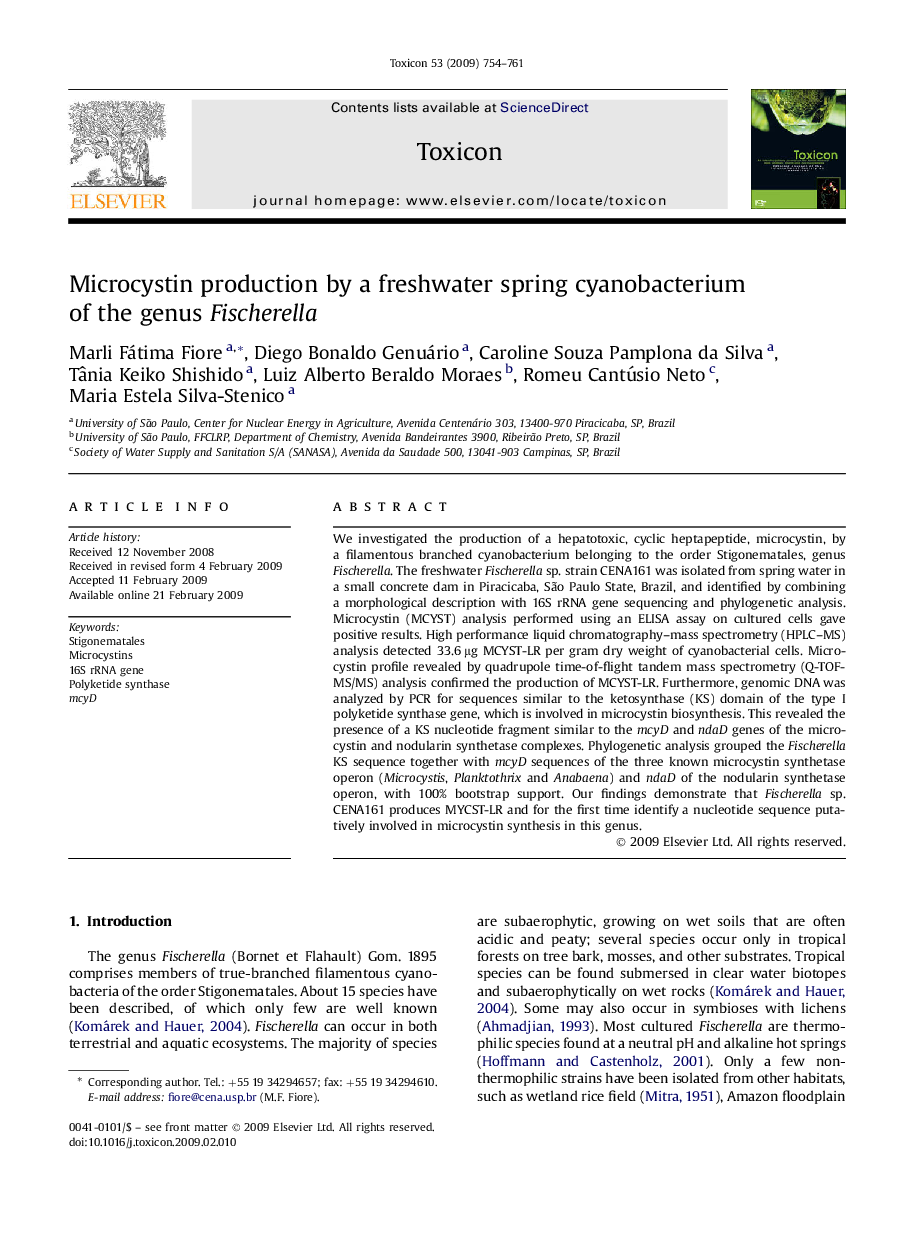| Article ID | Journal | Published Year | Pages | File Type |
|---|---|---|---|---|
| 2065271 | Toxicon | 2009 | 8 Pages |
We investigated the production of a hepatotoxic, cyclic heptapeptide, microcystin, by a filamentous branched cyanobacterium belonging to the order Stigonematales, genus Fischerella. The freshwater Fischerella sp. strain CENA161 was isolated from spring water in a small concrete dam in Piracicaba, São Paulo State, Brazil, and identified by combining a morphological description with 16S rRNA gene sequencing and phylogenetic analysis. Microcystin (MCYST) analysis performed using an ELISA assay on cultured cells gave positive results. High performance liquid chromatography–mass spectrometry (HPLC–MS) analysis detected 33.6 μg MCYST-LR per gram dry weight of cyanobacterial cells. Microcystin profile revealed by quadrupole time-of-flight tandem mass spectrometry (Q-TOF-MS/MS) analysis confirmed the production of MCYST-LR. Furthermore, genomic DNA was analyzed by PCR for sequences similar to the ketosynthase (KS) domain of the type I polyketide synthase gene, which is involved in microcystin biosynthesis. This revealed the presence of a KS nucleotide fragment similar to the mcyD and ndaD genes of the microcystin and nodularin synthetase complexes. Phylogenetic analysis grouped the Fischerella KS sequence together with mcyD sequences of the three known microcystin synthetase operon (Microcystis, Planktothrix and Anabaena) and ndaD of the nodularin synthetase operon, with 100% bootstrap support. Our findings demonstrate that Fischerella sp. CENA161 produces MYCST-LR and for the first time identify a nucleotide sequence putatively involved in microcystin synthesis in this genus.
